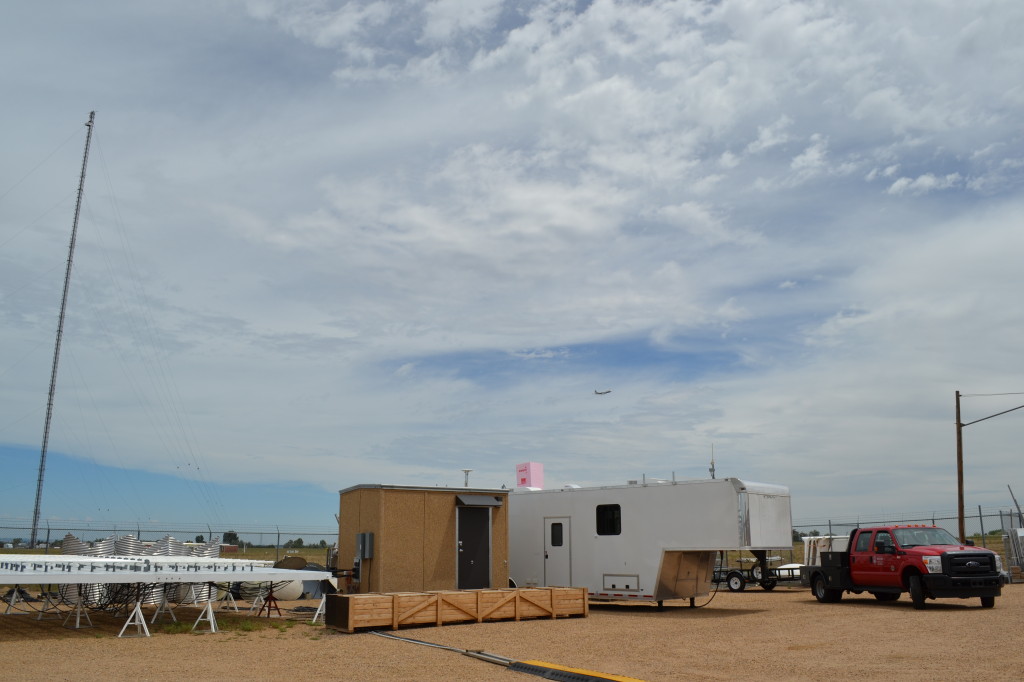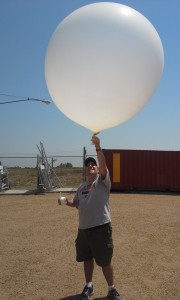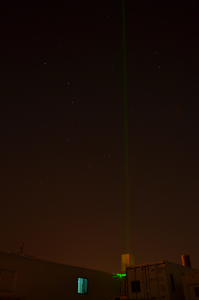SPARC: SSEC takes its research on the road again
Space Science and Engineering Center (SSEC) scientists are once again taking their research on the road with a new mobile research laboratory. The SSEC Portable Atmospheric Research Center (SPARC) is specially designed to carry instruments to study the atmosphere and make surface emissivity measurements.

The SSEC SPARC trailer at the Boulder Atmospheric Observatory (BAO),
with the BAO tower in the distance and a NASA P3 airborne observatory above. Photo credit: John Lalande, SSEC.

SSEC’s John Lalande launching a radiosonde at the BAO in support of FRAPPÉ. Photo credit: Brad Pierce, NOAA ASPB.
Currently stationed in Erie, Colorado, SPARC and the team of researchers from SSEC, are participating in the Front Range Air Pollution and Photochemistry Éxperiment (FRAPPÉ) until mid-August 2014.
SSEC retired its previous mobile lab, the AERIbago, after 20 years of service. The effort to prepare SPARC for the road was managed by Will Robus (now with UW-Madison’s Discovery to Product initiative) with Erik Olson and Dave Hoese providing in-house design and engineering expertise. SPARC is outfitted with an extensive instrument suite, including:
- An Atmospheric Emitted Radiance Interferometer (AERI),
- a High Spectral Resolution LIDAR (HSRL),
- a Vaisala ceilometer,
- a meteorology surface station,
- a radiosonde launch receiver, and
- a GPS total precipitable water instrument.
FRAPPÉ investigators are seeking to quantify components affecting air quality in the Colorado Front Range. Their ultimate goal is to use the measurements gathered during the experiment to study summertime ozone pollution. Measurements will come from ground-based instruments, like those in SPARC, and aircraft instruments.

The SSEC High Spectral Resolution Lidar (HSRL) operating at the BAO in support of FRAPPÉ, with a cameo by the big dipper. Photo credit: John Lalande, SSEC.
SPARC will be making observations from the NOAA Boulder Atmospheric Observatory. The AERI and HSRL will collect vertical-time cross-sections of atmospheric temperature, water vapor, aerosol extinction, cloud properties, carbon dioxide, carbon monoxide, ozone, methane, and nitrous oxide.
Once this field experiment concludes, participating scientists will have data sets to analyze and evaluate. And, once its inaugural trip is complete, SPARC will be readied for the next field campaign opportunity.
by Leanne Avila
